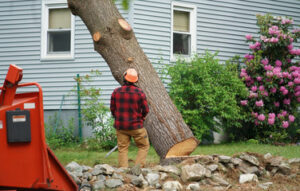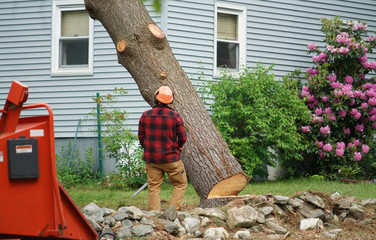Tree removal can be an expensive proposition. In some cases, it may be necessary to cut a tree down on private property. If this is the case, there are regulations for the removal of trees on private property. The costs involved with removing a tree are also discussed, as are the hazards associated with a dead or dying tree. The article also discusses some alternatives to tree removal.
The cost of tree removal varies depending on the size and species of the tree. Small trees usually cost $500 to $600, while large trees cost up to $1,500 or more. A large tree will require heavy equipment and extra care during removal. A medium-sized tree, which is usually less than 30 feet tall, will cost from $400 to $1,500.
Typically, tree removal costs include the removal of the tree, clean up, and stump. For example, stump removal can cost $150 to $500, depending on the size and root system. If the stump is small, it can be removed at a cheaper cost by renting a stump grinder from a hardware store. Chemical treatments and burning of the stump can cost another $100 or so.
A large tree can cost up to $1,500, as large trees typically have wide trunks that make them more difficult to remove. However, a small tree can be removed for around $200. In this case, a homeowner could choose to remove several smaller trees in their yard. However, it is recommended to consult an arborist before removing large trees.
The cost of tree removal varies widely in different regions of the country. Some trees are more difficult to remove than others, and some are more dangerous. The type of tree and where it is located are also factors that can affect the cost. As a result, it is best to leave tree removal to a professional. Performing it yourself can pose a number of dangers and can even endanger your property. The cost of tree removal will depend on whether the tree is dead or dying or if there are other factors that need to be addressed.
The diameter of the tree is another factor that affects the cost. A larger tree will weigh more than a smaller one. Moreover, a bigger tree will be more difficult to handle during the cutting process.
Regulations for tree removal on private property vary from city to city, but in general, if you’re looking to remove a tree, you’ll need to get a permit from the city’s Forestry Division. The city may deny the permit, and they also have the right to take down any trees on private property for safety reasons. In some cases, they will remove trees if they’re considered hazardous, typically because of disease.
Trees are an important part of our ecosystem. They filter air, reduce summer temperatures, protect soil from erosion, and provide habitat for wildlife. They’re important to everyone, so it’s important to protect them. Until recently, local governments could regulate who could remove trees on private property, but in 2019 the state legislature passed a law prohibiting local governments from regulating tree removal on private property.
Tree removal is generally allowed on private property. However, homeowners who want to remove trees from the public property may need a permit. This applies to street trees, median trees, and trees in sensitive lands and heritage zones. Unless the trees are in a stream corridor overlay zone, a permit is required. In addition, tree removal on commercial property is regulated by the City’s Planning Department. Residents can submit an application online to get a permit.
The purpose of the regulations for tree removal on private property is to protect public safety and private property. While many regulations focus on public safety, some are specific to a particular situation, such as a development project. In other cases, a tree may be designated as “hazardous” and must be removed.
There are certain exceptions to these regulations, but you may be able to remove a tree on your own property. In some cities, trees are protected by canopy road protection zones. These areas are primarily protected areas that are surrounded by native trees. Similarly, a canopy road may be surrounded by a tree canopy protection zone. Regardless of your circumstances, though, removing a tree on private property can still be a big mistake.

